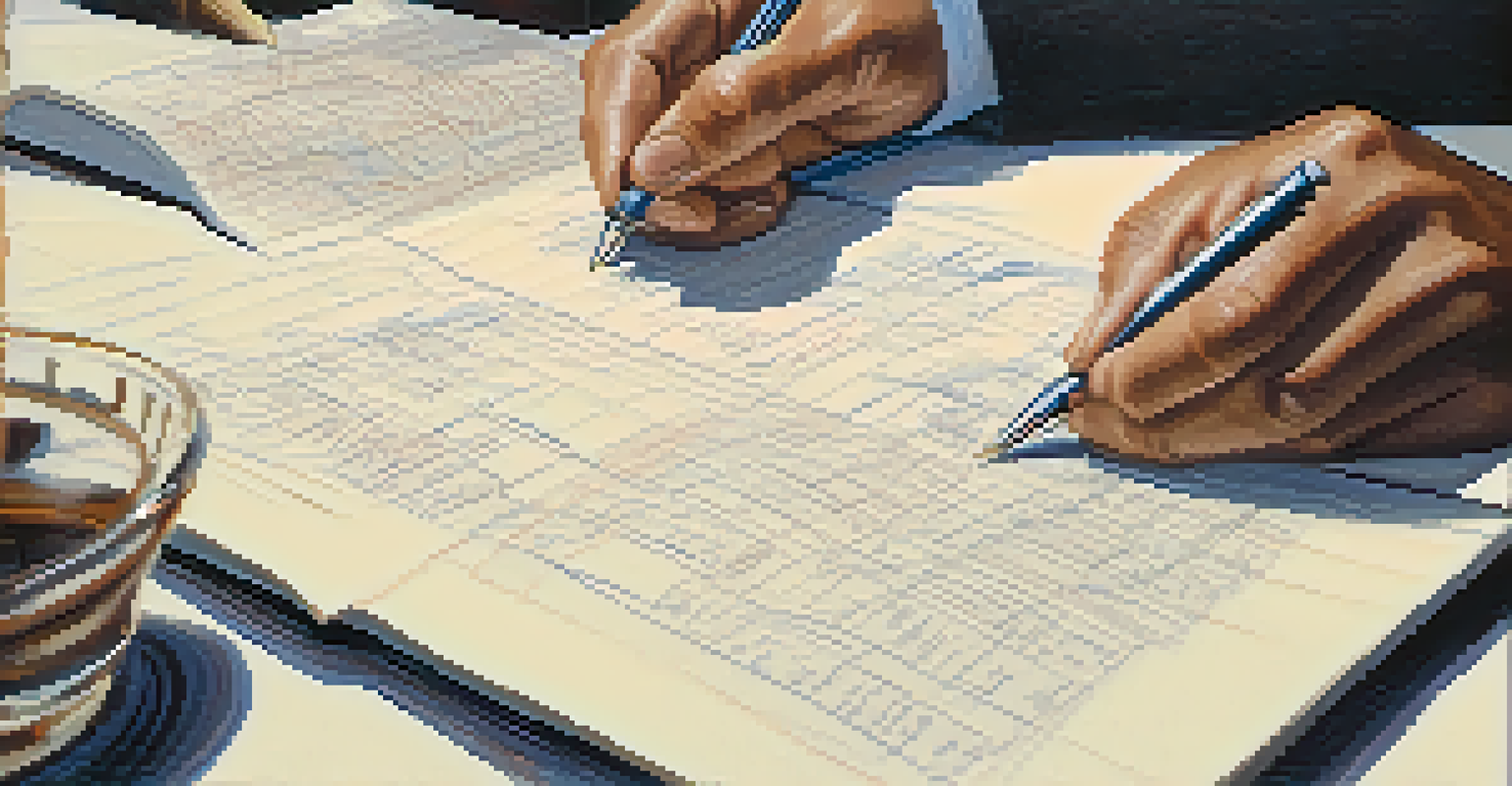The Role of Visualization in Reducing Performance Anxiety

Understanding Performance Anxiety: What It Is
Performance anxiety is that nagging feeling of dread that creeps in before a big moment, whether it's a presentation, a performance, or even a sports event. Many people experience it at some point, and it can manifest as physical symptoms like sweating or a racing heart. Understanding this anxiety is the first step in addressing it effectively, as knowledge can empower us to take action.
Visualization is daydreaming with a purpose.
Often, performance anxiety arises from the fear of judgment or the pressure to succeed, making it feel overwhelming. It’s as if you’re standing on a stage, spotlight shining down, and all eyes are on you. This heightened self-awareness can lead to a cycle of negative thinking, which only exacerbates the anxiety you feel.
However, recognizing that performance anxiety is common and manageable is crucial. The good news is that there are various techniques, such as visualization, that can help reduce these feelings and boost confidence when it matters most.
The Power of Visualization: How It Works
Visualization is a mental technique that involves creating vivid images in your mind to prepare for an upcoming performance. Think of it as a mental rehearsal; athletes often visualize themselves winning a race or making a perfect shot. This practice helps solidify your confidence and reduces anxiety by familiarizing yourself with the scenario.

When you visualize success, your brain sends signals that mimic the experience as if it's actually happening. It’s like training your mind to believe that you’re already capable of achieving your goals. This mental practice can enhance your performance and create a sense of calm before you step into the spotlight.
Performance Anxiety is Common
Many individuals experience performance anxiety, which can lead to physical symptoms and a cycle of negative thinking.
Moreover, visualization encourages a positive mindset. By picturing not just the successful outcome, but also the steps leading to it, you transform anxiety into motivation, reshaping your perspective on performance.
Visualization Techniques to Try
There are several visualization techniques that you can experiment with to find what works best for you. One popular method is the 'guided imagery' approach, where you close your eyes and imagine yourself succeeding in your performance scenario, down to the smallest details. This can include the sounds, sights, and even the emotions you might feel during the event.
The mind is everything. What you think you become.
Another effective technique is the 'mental movie' method, where you create a short video in your mind of yourself performing flawlessly. Picture every moment, from preparation to execution, and allow yourself to feel the thrill of success. The more vivid and detailed your mental movie, the more effective the visualization will be.
Lastly, consider integrating deep breathing with visualization. As you visualize, practice slow, deep breaths to calm your nerves and enhance your focus. Combining these techniques can create a powerful tool for reducing performance anxiety.
Building a Visualization Routine
To reap the benefits of visualization, consistency is key. Establishing a routine can help make this technique a natural part of your preparation process. Set aside a few minutes each day, ideally in a quiet space where you can focus without distractions, to visualize your upcoming performance.
Consider pairing visualization with other preparation methods, such as physical practice or reviewing your material. This holistic approach reinforces your confidence, making visualization feel like an integral part of your overall strategy rather than a standalone task.
Visualization Boosts Confidence
Visualization techniques help reduce anxiety and enhance performance by mentally preparing individuals for success.
Over time, as you regularly practice visualization, you may notice a significant decrease in performance anxiety. You’ll find that visualizing success becomes second nature, shifting your focus from fear to excitement.
The Science Behind Visualization and Anxiety Reduction
Research in psychology supports the effectiveness of visualization in reducing performance anxiety. Studies have shown that athletes and performers who engage in mental imagery experience lower anxiety levels and improved performance outcomes. This is largely due to the way visualization engages the brain's neural pathways, making the imagined actions feel more familiar.
When you visualize calming scenarios or successful performances, your brain releases neurotransmitters that promote relaxation. This physiological response can help counteract the fight-or-flight reaction typically associated with anxiety, allowing you to approach your performance with a clearer mind.
Moreover, visualization can help reframe your mindset around performance. By repeatedly picturing success, you can train your brain to respond with confidence rather than fear, creating a positive feedback loop that further diminishes anxiety.
Common Misconceptions About Visualization
Despite its proven benefits, there are common misconceptions about visualization that can deter people from trying it. One such myth is that visualization alone can guarantee success. While it’s a powerful tool, visualization is most effective when combined with actual practice and preparation.
Another misconception is that visualization requires a special talent or skill. In reality, anyone can learn how to visualize effectively, regardless of their background or experience level. The key is to practice regularly and to approach it with an open mind.
Routine Enhances Visualization Benefits
Establishing a consistent visualization routine can significantly decrease performance anxiety and shift focus from fear to excitement.
Lastly, some may think that visualization is a time-consuming process. However, even a few minutes of focused visualization can yield significant benefits. It’s about quality, not quantity, and incorporating it into your routine can make a world of difference.
Final Thoughts: Embracing Visualization for Success
As you navigate performance anxiety, remember that visualization is a valuable tool at your disposal. Embracing this technique can help you build confidence, reduce stress, and ultimately enhance your performance. It’s not just about picturing success but also about fostering a positive mindset that empowers you to face challenges head-on.
By integrating visualization into your routine, you can shift your focus from anxiety to excitement, transforming how you approach performances. Think of it as giving yourself a mental edge that prepares you to shine when it counts the most.

So, the next time you find yourself facing performance anxiety, take a moment to visualize your success. With practice and dedication, you may find that what once felt daunting becomes a thrilling opportunity for growth and achievement.